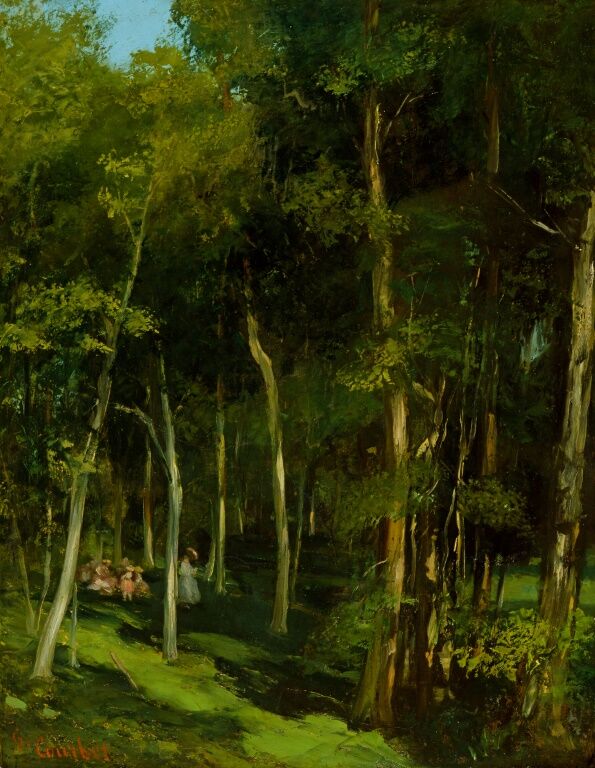Painting stolen by Nazi Party to be returned to Jewish decendants

A painting from the 19th century that was once owned by Hermann Goering, a high-ranking member of the Nazi Party, is going to be returned to the descendants of its original Jewish owner.
The Fitzwilliam Museum at Cambridge University in Britain agreed to return a painting by French artist Gustave Courbet to the descendants of its original Jewish owner, who had it seized by the Nazis.
The painting, “La Ronde Enfantine,” which dates back to around 1862, was in the museum’s storage. An investigation by a government-appointed expert panel last year has pondered over its fate for a year.
The Spoliation Advisory Panel, a body of judges and historians that investigates claims for Nazi loot, found evidence supporting the restitution claim made by the heirs of the painting’s one-time owner, Robert Bing, who was a French Resistance hero during World War II. The museum is now following the panel’s advice and returning the painting to Bing’s heirs, reported the Independent.
The panel said…
“This is a deliberate seizure by the German authorities from a Jewish citizen of France with the diversion of the work of art to Nazi leaders.
“No other reason for seizure other than the Jewishness of Mr Bing has appeared to explain this seizure.”
A Fitzwilliam spokesperson stated that they will comply with the advice given.
According to a report by a panel, the Nazi invaders took a painting from Bing’s Paris apartment in 1941, which depicted children playing in a forest. Bing and his mother had already left the city before the Nazis arrived. It is believed that Bing’s maternal grandmother obtained the oil-on-canvas painting after marrying a wealthy banker and merchant.
The panel’s report indicated that two members of the Nazi organization, Einsatzstab Reichsleiter Rosenberg (ERR), which was established to traffic stolen art, stole the painting. During the war, the artwork was in the possession of Gestapo founder Hermann Goering, who had amassed a large collection of stolen art.
The report stated that Goering had proposed to exchange the painting as part of a transaction with the German Foreign Minister, Joachim von Ribbentrop, but the transaction fell through because Ribbentrop or his wife disliked the work.
After the war, the Fitzwilliam suggested that Allied soldiers found the painting hidden in secret tunnels near the Nazi elite’s retreat at Berchtesgaden in Bavaria, but Bing’s descendants dispute this claim.
The trail went cold until 1951 when the London-based art dealer, Arthur Tooth and Sons, acquired the painting from Kurt Meissner, a Swiss dealer suspected of looting. The painting’s authenticity was verified by French expert Andre Schoeller, who was also suspected of looting.
The painting appeared again in 1951, this time in the inventory of a London art dealer. It was sold to Eric Milner-White, the Dean of York, who later gifted the artwork to the Cambridge museum that same year. The report clarified that the museum and Milner-White should not be criticized as they acted in accordance with the prevailing standards at the time.
The painting was created by Courbet, who was a leading figure of the Realist movement in French art. He was also responsible for creating “L’Origine du monde,” a controversial painting in the 19th century due to its depiction of a woman’s genitalia.
Bing was involved in the French Resistance until 1944 and was awarded several honours for his bravery. He died in 1993.
Latest Thailand News
Follow The Thaiger on Google News:


























